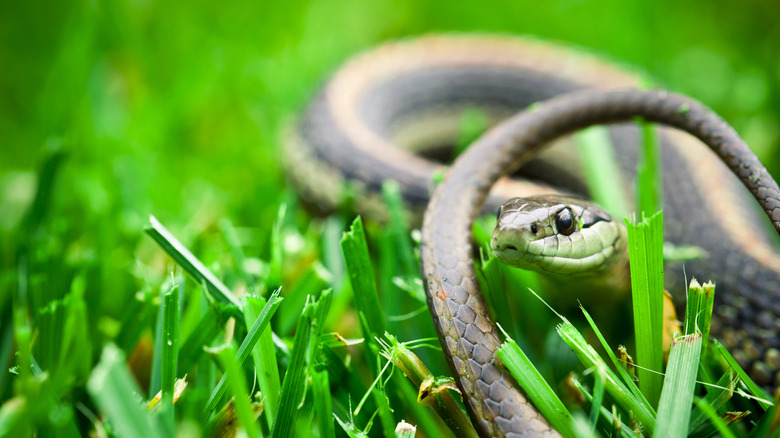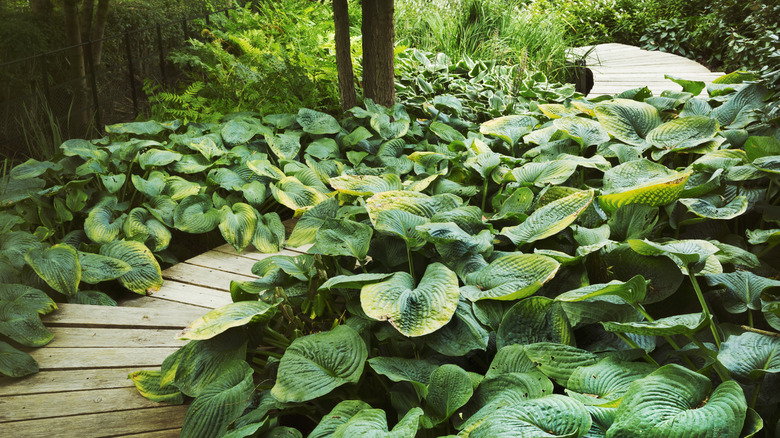The Snake-Attracting Plant You Might Not Want To Grow In Your Yard Or Garden
Creating the perfect cottage garden can be one of the most relaxing activities for homeowners, ranging from choosing the right shrubs and flowers to hours spent nourishing and caring for your seasonal vegetables. A well-planned garden is more than just a collection of plants; it becomes an outdoor sanctuary that reflects your individual style and may even provide a bit of fresh produce in the process. Whether you're focused on aesthetics, pollinator-friendliness, or drought tolerance, these seemingly harmless plants can become the epicenter for unwanted visitors in your garden, especially snakes. Some of the most popular and beautiful garden plants can also be surprisingly attractive to these slithery visitors, especially Hostas (Plantain lillies). These lush perennials provide the perfect place for garden snakes and may be inviting a few to join your garden.
So what is it about hostas that makes them the perfect hiding spot for slithery visitors? Snakes are typically drawn to spaces that offer shade, protection from predators, and a cool, moist environment. Hostas check every one of those boxes. As they mature, hostas form dense, often overlapping layers of foliage that create just enough shelter for a snake to disappear into unnoticed. The broad leaves not only block sunlight from reaching the soil, keeping it cool and damp, but they also act as natural camouflage for snakes. These unseen hidden nooks may just be lurking around your garden, and harboring a few snakes in the process. But how can you address your snake problem short of ripping up all of your ground cover? The answer is — you may not want to.
The benefits of garden snakes — and what to plant instead
Before you start ripping out the best shade-loving ground cover, you might want to consider the potential benefits of having a few snakes in your garden. For starters, most common garden snakes — like garter snakes — are entirely harmless to humans, and they can actually be extremely helpful in your yard. These quiet predators serve as a natural form of pest control, snacking on slugs, beetles, grasshoppers, and even small rodents that could otherwise wreak havoc on your plants. They can be especially helpful in vegetable gardens to keep pests at a minimum without using harsh chemicals that would affect your crops. And since snakes tend to be shy around humans, you would most likely not interact with them that often. This is also entirely dependent on your location, as dangerous snakes may also look to set up shop around your home, especially if you're providing the perfect sanctuary for them.
If you love the look of hostas, but aren't too keen on having snakes roaming around your garden, you still have plenty of options when it comes to greenery. You might want to plant coral bells, which offer a range of eye-catching colors without creating a dense ground canopy. Astilbe is another common garden foliage that provides lush foliage and bright blooms while also maintaining airflow to the base of the plant. Certain species of fern may also be an effective solution to minimizing your garden snake problem. Just ensure that you aren't choosing an option that will grow too densely. With each plant, regularly trimming lower greenery can minimize the number of hiding spots for snakes.

